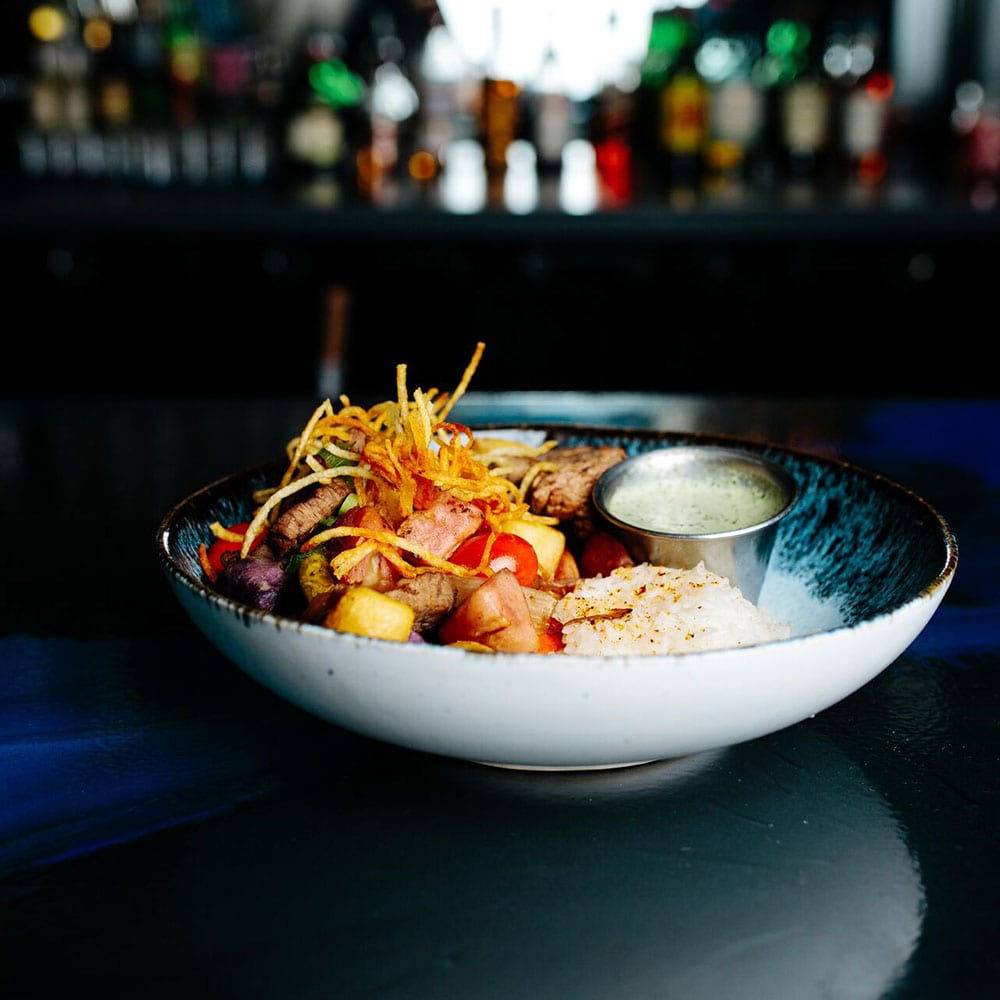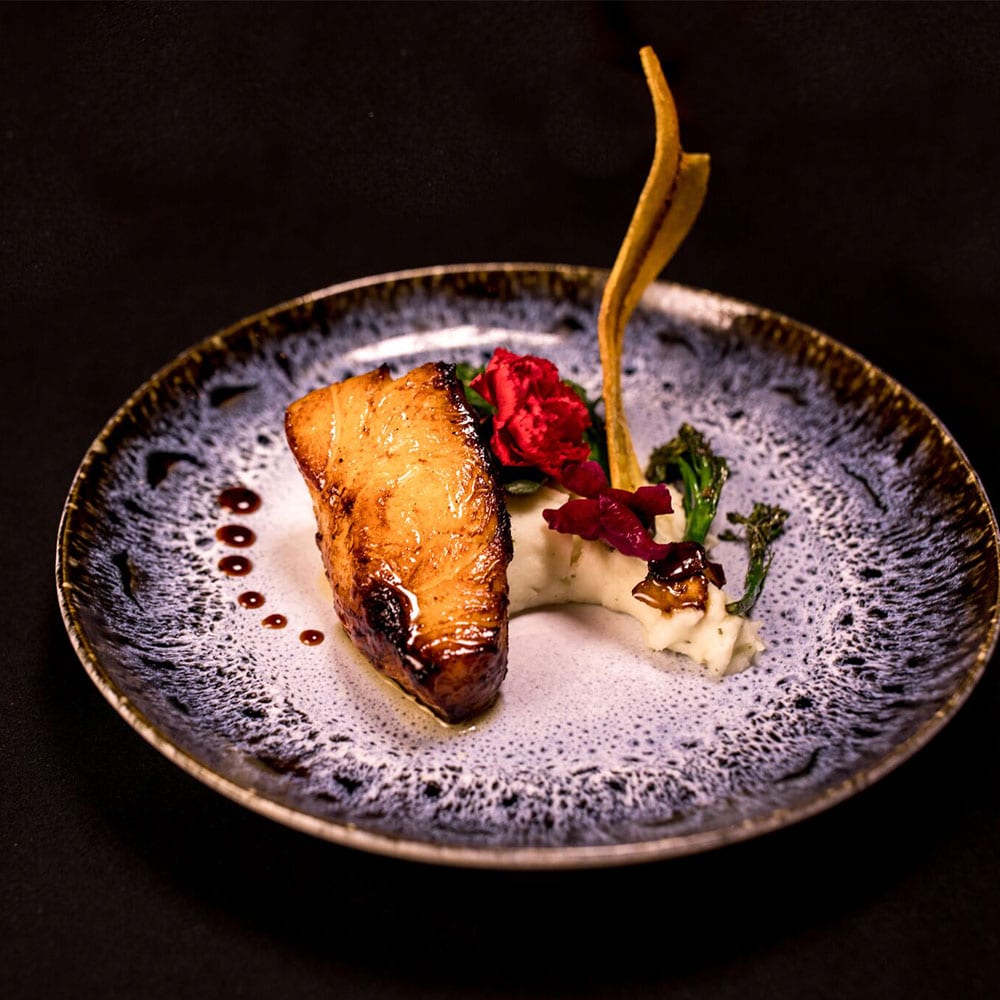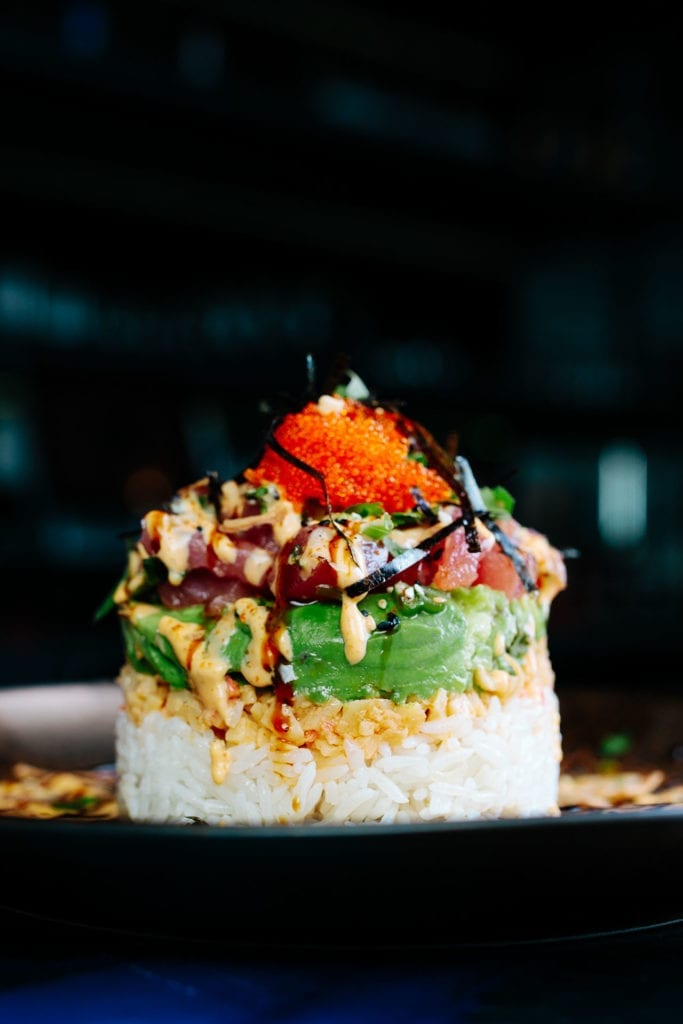James Vu is a student of everything. The owner (and occasional chef) of La Brasa – a Peruvian-Asian fusion joint in OKC with a ton of history – blends food, booze, art, music and design in his restaurant to give diners the sense that they are existing momentarily in the pages of an art magazine.
Talking to him, he jumps seamlessly between chefs who’ve inspired him; his love of street art; his experiences in Miami, D.C., Chicago, and Latin America; the history of Peruvian cuisine; and any other topic that flashes across the screen of his voraciously curious mind.
His curiosity is matched only by his energy, and were it not for both, La Brasa may have failed just as it was getting started.
“We had a tough start,” says Vu. “There was a separation between me and the other original partner, and when it was over, one cook and I were alone in the kitchen. It was a weekend. We were supposed to cook for seventy guests.”
He remembers comping about fifty items that night, going home dejected, and getting a speech from his wife.
“She told me that I’d always been a strong person, and I could do this,” he says. “I dove into the menu, and the next day I told the cook to teach me how to make two of the high volume ticket items so she would be free to cook the rest of the orders.”
Vu had never worked a line before, but the two of them started knocking out orders, and after he cut down the number of reservations on OpenTable, they got a rhythm. More hires followed, and the popularity of the place – part of that “tons of history” thing above – helped him solidify La Brasa as a popular night spot on the edge of the Asian District.
For decades, the building was a Kamp’s deli and grocery store, and for nearly a decade after that, it was best known as the home of Robotic Wednesday, a dance party that helped transition OKC out of its morass of top 40 and country dance clubs.
When deciding what La Brasa would be, Vu drew on two of his coastal favorites: the pollo a la brasa – roasted Peruvian chicken – he learned to love at hole-in-the-wall joints in the D.C. area, and fusion food trucks from California, like Chef Roy Choy’s Kogi food truck.
“I grew up in an Asian household,” says Vu, who is Vietnamese. “My parents cooked a lot – so I learned to combine flavors and spices through trial and error. I always loved fusion cooking, and Peruvian food is fusion, thanks in large part to Chinese and Japanese immigrants.”
The ceviche at La Brasa, like the Lomo Saltado, is an homage to that Asian-Latin American fusion. Japanese immigrants were the first in Peru to construct ceviche using their beloved sashimi techniques, and the Chinese immigrants brought fried rice to lomo saltado. Vu is trying to communicate that intentional fusion in La Brasa’s dishes, and because he is a student of everything, he adds whatever fascinates him.
“I love bibimbap, but I didn’t go traditional,” he explains. “I marinate the steak in Peruvian spices, and I add aji amarillo peppers.”
Those peppers also go in the scratch sauces at La Brasa. Everything that can be made from scratch is in Vu’s kitchen, including ssamjang, gochujang, aji verde, and the tres leches cake.
“It’s close to an angel sponge cake,” he says. “We bake it in house, and add the three milks to serve. Unlike most stuff in house, it’s pretty traditional.”
La Brasa has an extensive wine list with an emphasis on South American wines, as well as a full bar, serving classic and featured cocktails.






























